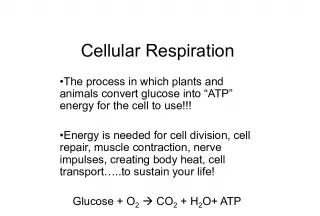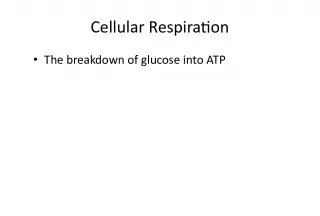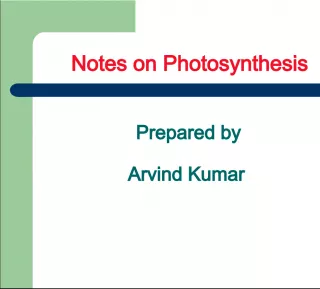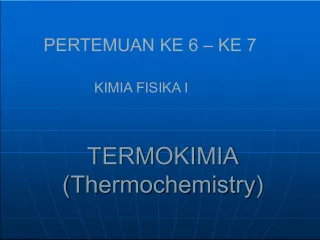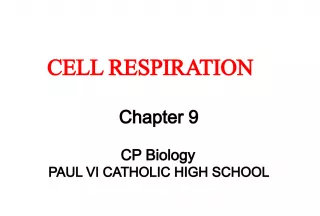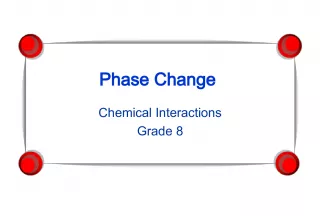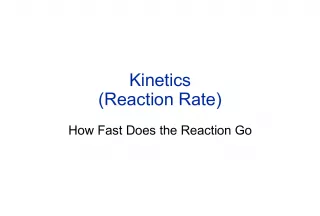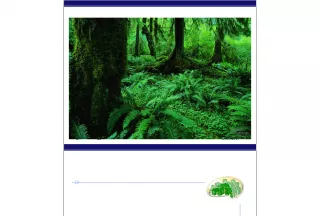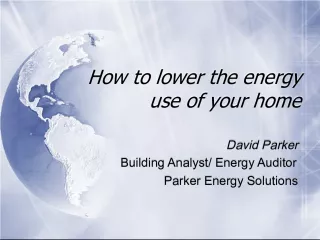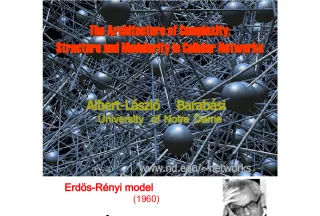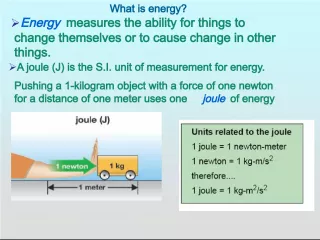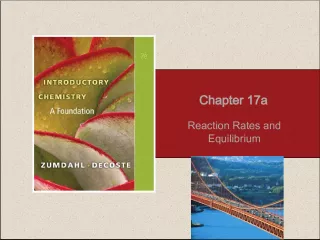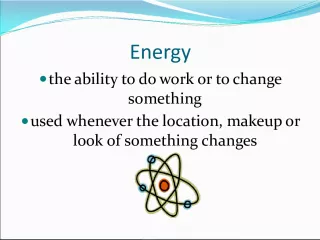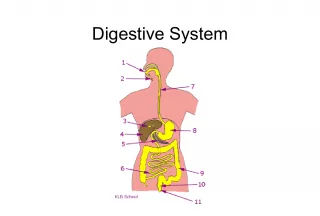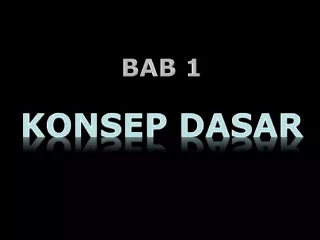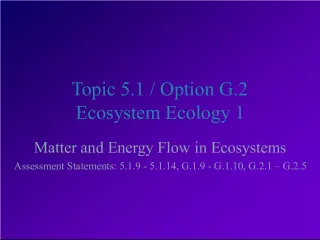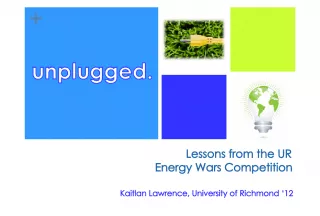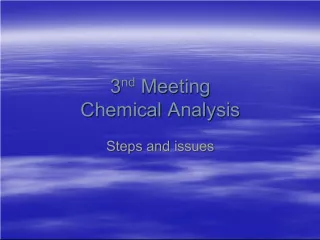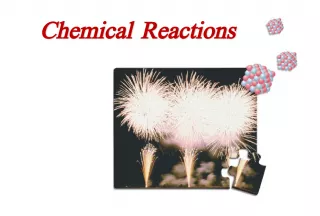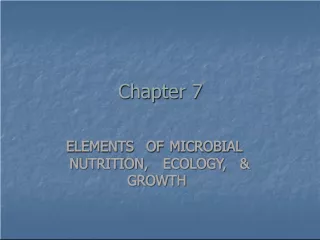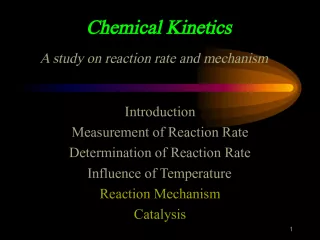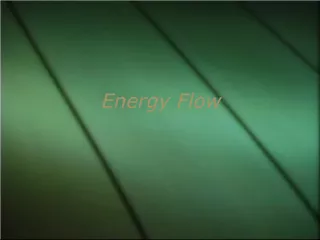Cellular Respiration: Harvesting Chemical Energy ATP


The 2006-2007 AP Biology curriculum focuses on the process of cellular respiration and its role in harvesting chemical energy to produce ATP. The main goal of cellular respiration
- Uploaded on | 1 Views
-
 frejaolsen
frejaolsen
About Cellular Respiration: Harvesting Chemical Energy ATP
PowerPoint presentation about 'Cellular Respiration: Harvesting Chemical Energy ATP'. This presentation describes the topic on The 2006-2007 AP Biology curriculum focuses on the process of cellular respiration and its role in harvesting chemical energy to produce ATP. The main goal of cellular respiration. The key topics included in this slideshow are . Download this presentation absolutely free.
Presentation Transcript
Slide1AP Biology2006-2007 Cellular Respiration Harvesting Chemical Energy ATP
Slide2AP Biology2006-2007 What’s the point? The point is to make ATP ! ATP
Slide3AP BiologyHarvesting stored energy Energy is stored in organic molecules carbohydrates, fats, proteins Heterotrophs eat these organic molecules food digest organic molecules to get… raw materials for synthesis fuels for energy controlled release of energy “burning” fuels in a series of step-by-step enzyme-controlled reactions
Slide4AP BiologyHarvesting stored energy Glucose is the model catabolism of glucose to produce ATP C 6 H 12 O 6 6O 2 ATP 6H 2 O 6CO 2 + + + CO 2 + H 2 O + heat fuel (carbohydrates) COMBUSTION = making a lot of heat energy by burning fuels in one step RESPIRATION = making ATP (& some heat) by burning fuels in many small steps CO 2 + H 2 O + ATP (+ heat ) ATP glucose glucose + oxygen energy + water + carbon dioxide respiration O 2 O 2 + heat enzymes ATP
Slide5AP BiologyHow do we harvest energy from fuels? Digest large molecules into smaller ones break bonds & move electrons from one molecule to another as electrons move they “ carry energy ” with them that energy is stored in another bond , released as heat or harvested to make ATP e - + + e - + – loses e- gains e- oxidized reduced oxidation reduction redox e -
Slide6AP BiologyHow do we move electrons in biology? Moving electrons in living systems electrons cannot move alone in cells electrons move as part of H atom move H = move electrons p e + H + H + – loses e- gains e- oxidized reduced oxidation reduction C 6 H 12 O 6 6O 2 6CO 2 6H 2 O ATP + + + oxidation reduction H e -
Slide7AP BiologyCoupling oxidation & reduction REDOX reactions in respiration release energy as breakdown organic molecules break C-C bonds strip off electrons from C-H bonds by removing H atoms C 6 H 12 O 6 CO 2 = the fuel has been oxidized electrons attracted to more electronegative atoms in biology, the most electronegative atom? O 2 H 2 O = oxygen has been reduced couple REDOX reactions & use the released energy to synthesize ATP C 6 H 12 O 6 6O 2 6CO 2 6H 2 O ATP + + + oxidation reduction O 2
Slide8AP BiologyOxidation & reduction Oxidation adding O removing H loss of electrons releases energy exergonic Reduction removing O adding H gain of electrons stores energy endergonic C 6 H 12 O 6 6O 2 6CO 2 6H 2 O ATP + + + oxidation reduction
Slide9AP BiologyMoving electrons in respiration Electron carriers move electrons by shuttling H atoms around NAD + NADH (reduced) FAD +2 FADH 2 (reduced) + H reduction oxidation P O – O – O – O P O – O – O – O C C O NH 2 N + H adenine ribose sugar phosphates NAD + nicotinamide Vitamin B3 niacin P O – O – O – O P O – O – O – O C C O NH 2 N + H NADH carries electrons as a reduced molecule reducing power! How efficient! Build once, use many ways H like $$ in the bank
Slide10AP BiologyOverview of cellular respiration 4 metabolic stages Anaerobic respiration 1. Glycolysis respiration without O 2 in cytosol Aerobic respiration respiration using O 2 in mitochondria 2. Pyruvate oxidation 3. Krebs cycle 4. Electron transport chain C 6 H 12 O 6 6O 2 ATP 6H 2 O 6CO 2 + + + (+ heat )
Slide11AP Biology2006-2007 What’s the point? The point is to make ATP ! ATP
Slide12AP Biology ATP synthase enzyme H + flows through it conformational changes bond P i to ADP to make ATP set up a H + gradient allow the H + to flow down concentration gradient through ATP synthase ADP + P i ATP H + H + H + H + H + H + H + H + H + ATP ADP P + But… How is the proton (H + ) gradient formed? And how do we do that?
Slide13AP Biology2006-2007 H + H + H + H + H + H + H + H + H + ATP Got to wait until the sequel ! Got the Energy? ADP P +
